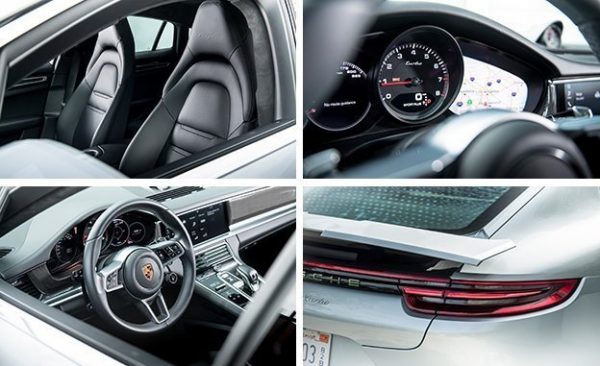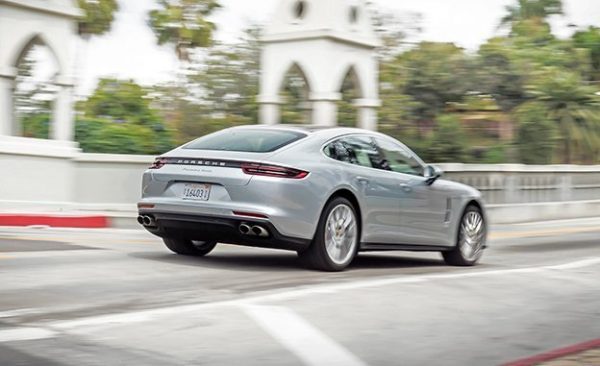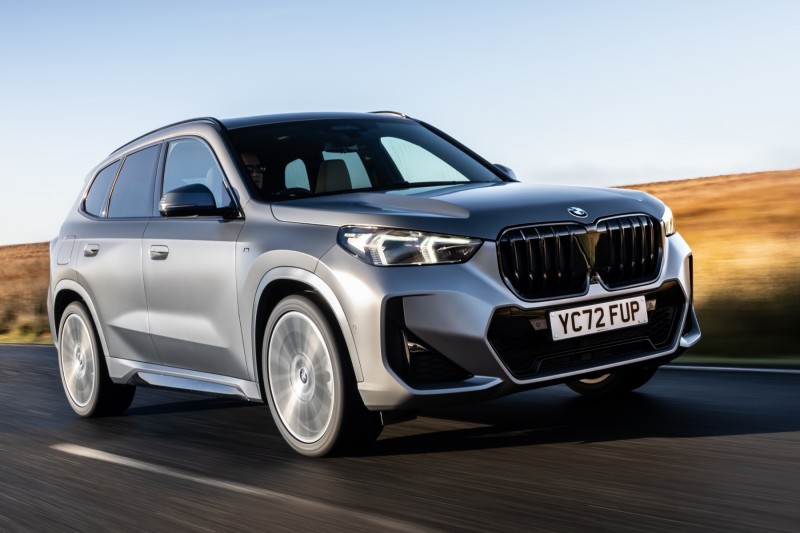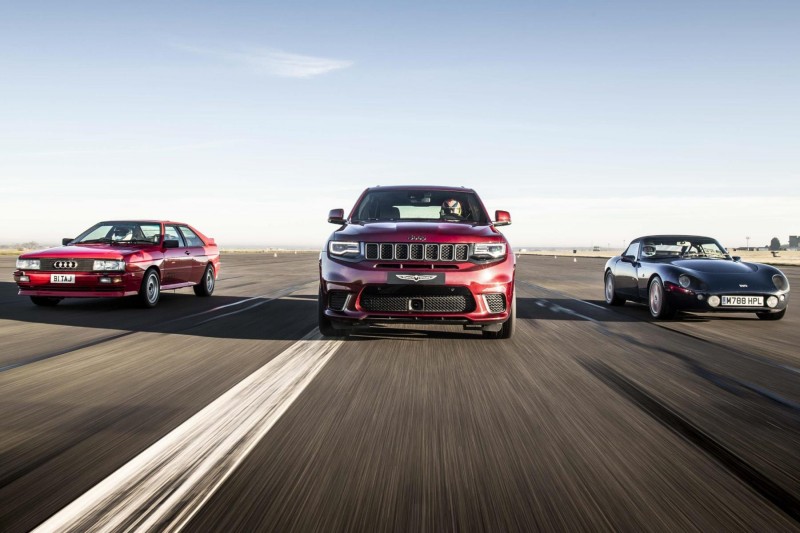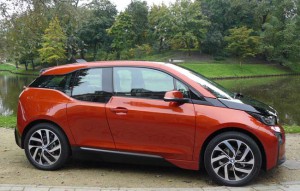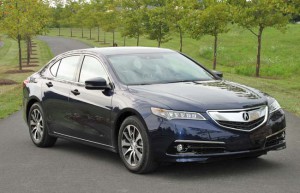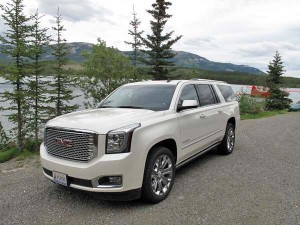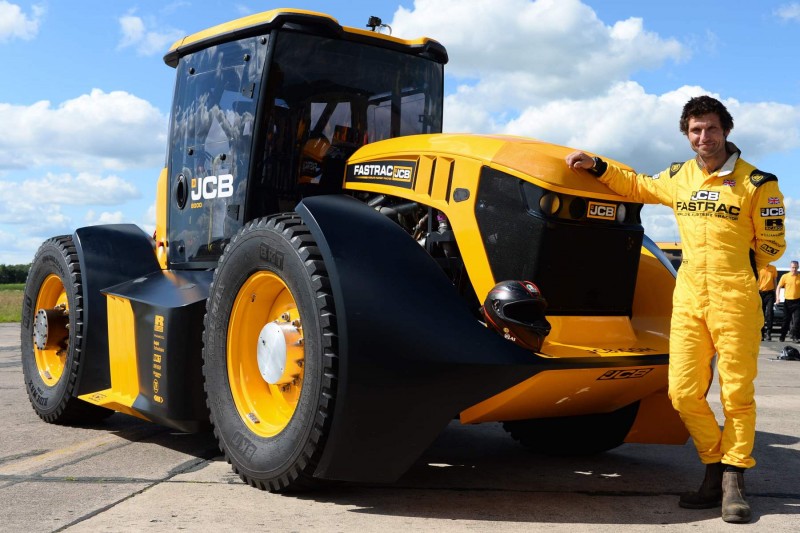2017 Porsche Panamera Turbo
A Porsche sedan used to seem like a strange idea, and the first one, the Panamera, did indeed look strange. Mixing two incongruent design briefs—911 styling cues and a need for rear-seat head- and legroom—resulted in a four-door hunchback that appeared as if it had been elongated uncomfortably in traction. Each first-generation Panamera we tested drove brilliantly, with enough 911 in the controls to set it apart from its big-sedan competition, but let’s be honest: That thing was hideous.
Cut to the second go-round, wherein the Panamera has a gently sloping roofline that complements the 911-like greenhouse and taillights. The long nose’s headlights are reminiscent of the Boxster/Cayman side of the showroom. Quasimodo is now Prince Charming.
Plus, the sensations that come through the controls are even more sports-car-like. Decisive steering that delivers barely edited information from the tires and a hard brake pedal with stoppers that can halt the Turbo from 70 mph in 153 feet remind us of the 911. What differentiates the dynamics of the Panamera from those of the big sporting sedans sold by Audi, BMW, Maserati, and Mercedes is that Porsche tunes in sharp and raw controls that the others refine out.
But we wouldn’t go so far as to say that the 4593-pound Panamera handles exactly like Stuttgart’s sports cars. Porsche has thumbed its nose at Sir Newton for years, but a front-engine sedan with a 116.1-inch wheelbase and 53.5 percent of its weight over the front wheels will never act like a 911 or a 718. We do get the feeling that Porsche tried valiantly to make that happen, though. Every Panamera Turbo comes with control arms in front and a multilink rear suspension, each corner held up by an electronically controlled three-chamber air spring. Our test car added optional four-wheel steering and 21-inch wheels with 275/35ZR-21 Continental summer tires in front and 315/30ZR-21s in back. For those who really want to chase 911s, there’s the $5000 Porsche Dynamic Chassis Control (PDCC) package, which bundles auto-adjusting electronically actuated anti-roll bars with brake-based torque vectoring and an electronically controlled limited-slip rear differential.
Even without dynamic anti-roll bars and torque vectoring, the Panamera Turbo glides through corners as if guided by an invisible hand. There’s 0.94 g of stick and total stability at the limit. When pushed slightly beyond, the chassis releases with an easy and predictable ooze that avoids surprises. To keep weight in check, the floor, hood, doors, front structure, and body sides are aluminum, but there’s no escaping the car’s size and mass. We admit that we’re holding handling to an unfair standard because of the other cars that wear the Porsche crest. Against its competition, the Panamera is a track god.
It is, however, right and fitting to apply the sports-car standard to the Panamera Turbo’s acceleration. Turbo models get a twin-turbocharged 4.0-liter V-8 with 550 horsepower and 567 pound-feet of torque. That power matches the 550 horses of the previous-generation’s 4.8-liter Turbo S model. The 4.0-liter provides crisp throttle response and acts more like a big-displacement, naturally aspirated V-8 than an engine with two turbochargers. With the sport exhaust, a standalone option for $3490 or part of the $5580 Sport package, the engine purrs a mellow rumble that’s never loud or obnoxious.
While the rest of the class has eight- or nine-speed conventional automatics, Porsche persists with a dual-clutch that adds one gear this year for a total of eight. Shifts are smooth and instant, and the dual-clutch’s big trick, launch control, is also included in the Sport package or $2530 on its own. Spending the money frees the Panamera to do 5000-rpm clutch drops that, thanks to the Turbo’s standard all-wheel drive, will make you gasp and cause anyone in the car to hyperventilate.
In just 3.0 seconds, the Panamera blurs to 60 mph, and the quarter passes in 11.3 seconds at 122 mph. In the 60-mph sprint, this Turbo is an even match for the now-dead 911 GT3 RS and quicker than every Porsche sports car we’ve recently tested with the exception of the 911 Turbos.
Eventually, we satisfied all the prurient needs of the 16-year-old inside us, stopped treating the Panamera like our stepdad’s car, and started driving it the way most neurosurgeons will their $150,000 luxury limo. Turns out it’s a spectacularly sumptuous sedan. Soft leather covers the instrument panel, and our test car came with optional carbon-fiber panels instead of wood. Despite the 21-inch wheels, the ride is compliant, noise levels reach only 65 decibels at 70 mph, and the 14-way front seats fit perfectly, even if they look a bit like Spock’s ears. In the back are two more seats, and despite the plunging roofline, there’s still plenty of headroom and space for the couple you’re driving to dinner. The lightweight aluminum doors do take a slam to close, so maybe you’ll want the $2790 Premium Package Plus that adds soft-closing doors.
The last Panamera had enough buttons to stymie a 747 pilot. The characteristic herringbone arrangement of switches in the old car is gone, with many of those functions moved to the big 12.3-inch touchscreen that also handles audio, navigation, phone, and vehicle settings. As in Porsche’s sports cars, an analog tachometer sits front and center; it’s flanked by two seven-inch screens that display navigation maps, vehicle settings, speed, and other info.
Now that Porsche has well and truly fixed the Panamera’s styling, there’s not much to complain about aside from the price. This car remains at the head of its class in terms of handling and acceleration. Although its window sticker is in line with the Mercedes-AMG S63 and the BMW M760i, it should be noted that this rig costs a lot more than the Audi S8 Plus. But those big sedans always read as sedans; the Panamera Turbo’s attraction lies in its meaningful connection to its brand’s heritage. This is really more of a modern-day 928—a four-seat GT with a V-8 up front and build quality commensurate with the price. Perhaps it’s no coincidence then, that in the early ’90s, a 928 cost about $80,000. Adjust that for inflation and you get the Panamera Turbo’s $150,000 base price. Porsche’s internal code for the Panamera is 971, but maybe it ought to subtract a few dozen numerals.




